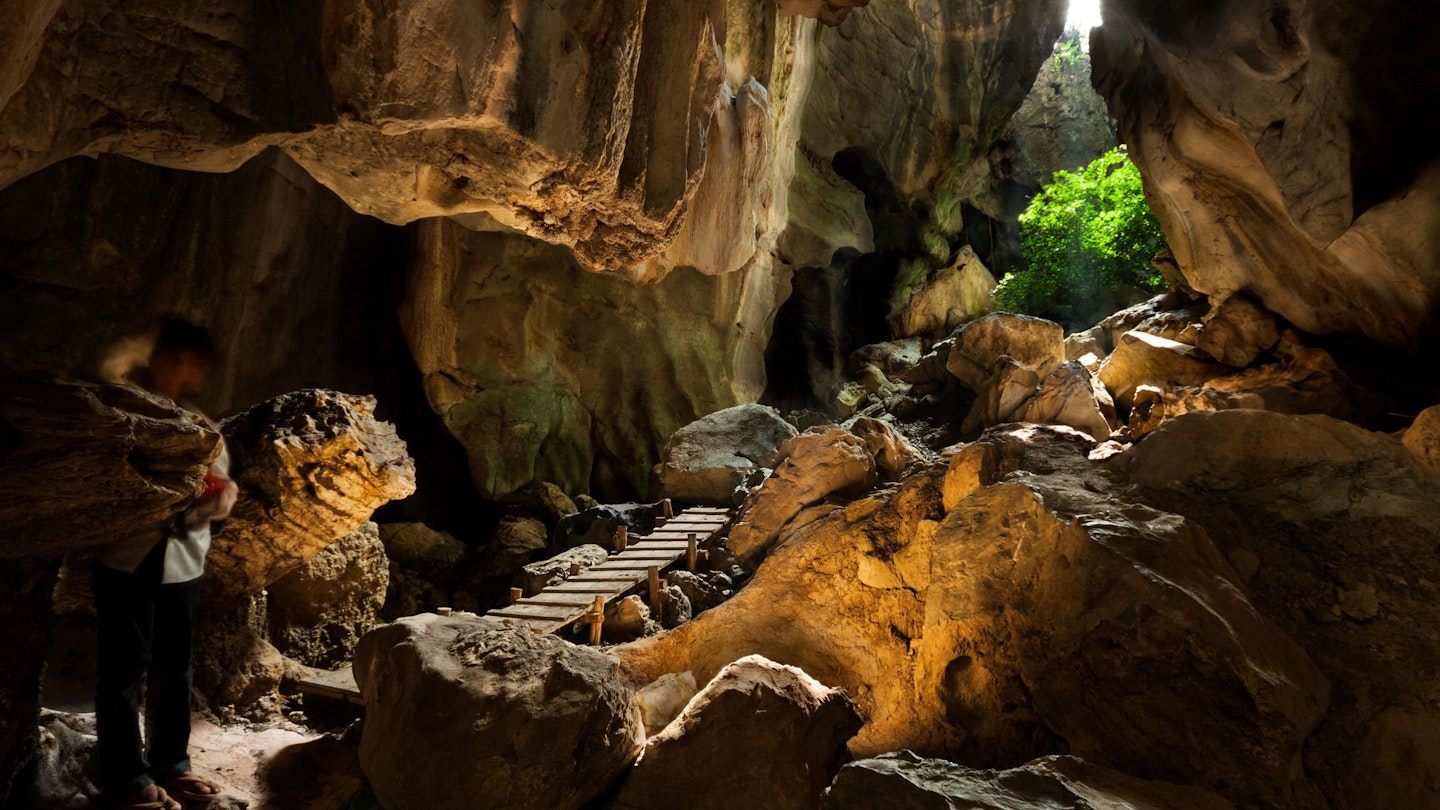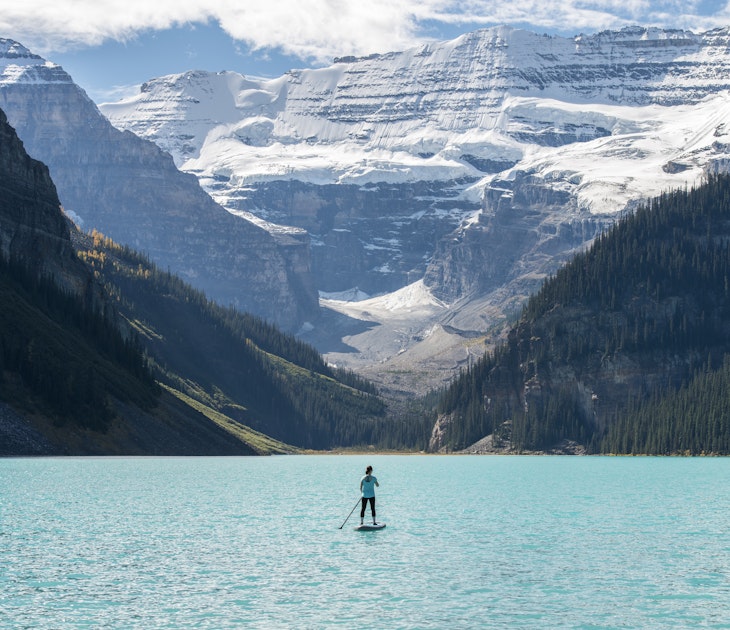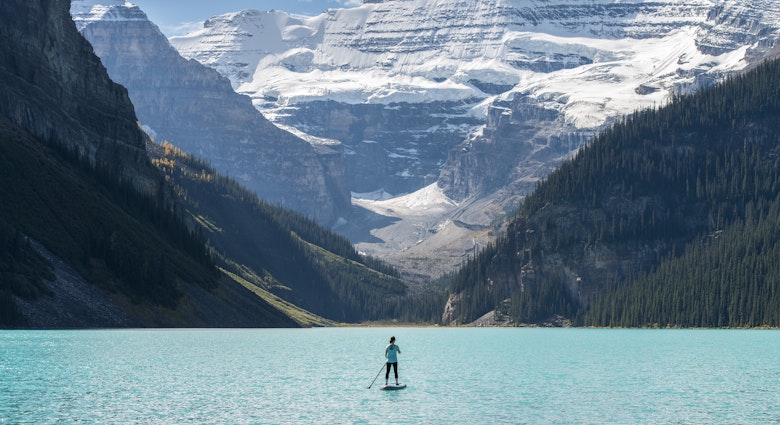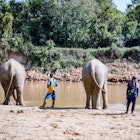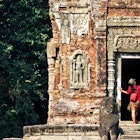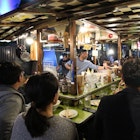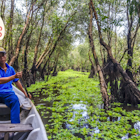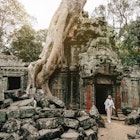The past of Cambodia is populated by modern horror and astonishing antiquity, but this enigmatic country offers a present full of alluring adventures.
Though tiny, Cambodia’s burgeoning adventure scene is slowly opening thatched doors to the country’s most remote corners, revealing spellbinding diving on remote reef systems, epic hiking through untrammelled jungle terrain and a diversity of Mekong River experiences.

Caving & climbing
The 203 gruelling steps that lead up, then down – way, deep down – to the cave temple of Phnom Chhnork open up an other-worldly, subterranean realm. Phnom Chhnork is a short, 8km hop from the cosy town of Kampot, and features Funan-era shrines (5th – 7th centuries), monuments to the deity Shiva, and relics that pre-date even the great Angkor Wat. Say hello to the stalactite elephant that defiantly congests one of the passageways (for luck, of course).
Nearby is the Phnom Sera cave system, home to so many ancient treasures that you’ll enter feeling like Indiana Jones, if only for a day (entry fees are roughly $1, bullwhips are sold separately). Visit the caves at Phnom Sorsia if you’re into bat caves. Kampot-based guides offer tours combining rock climbing, via ferrata, abseiling and caving, flecking your underground adventure with colourful anecdotes, legends and lore.

Diving
Pretty gritty Sihanoukville is a fuzzy moustache on Cambodia’s southwestern lip, known for its lively backpacker vibe, golden stretches of sand, and spectacular diving and snorkelling. Visitors hoping to go nose-to-nose with whale sharks can board a skiff bound for Koh Prins, some five-hours from shore, where unblemished soft coral, countless reef fish, turtles and exotic nudibranchs await. Cambodia’s diving epicentre is comprised of three main islands: Koh Prins (Big Island), Koh Moan (Chicken Island) and Naked Island. Caves, sheer vertical cliff faces and deep trenches are the hallmarks, but thanks to generally gentle underwater currents, even divers new to the sport can go deep into the blue. Night diving at the Anemone Garden is a feature experience on a grand scale – mingle with blue-spotted stingrays, energetic moray eels, rare bamboo sharks, catsharks and more. Many of the outer islands are uninhabited, but serve as excellent in-between getaway destinations for divers looking for an opportunity to recharge with sand between their toes and sunshine on their shoulders.

Trekking
Endangered gibbons provide a bombastic soundtrack to Cambodia’s adventures, where the cacophony of raindrops on the jungle canopy in an otherwise silent green world can seem as loud as any subway train. Hiking here involves walking through one of the world’s few remaining wild frontiers.
Angkor what? Getting to know Cambodia's most iconic temple
Virachey National Park
Way, way removed from the banana-pancake trail, in Cambodia’s remote northeast, lies humbling Virachey National Park, the largest parcel of protected land in the country. Here, the intrepid lace their boots tight, clutch machetes in sweaty palms and venture deep into the jungle, time-travelling to a world long forgotten. Far more rugged than the jungles in neighbouring Thailand, trails (where there are trails) can be punishing in difficult weather, but the rewards are great – some glimpse tigers and others spy on clouded leopards. Treetop ecolodges provide a unique experience for hikers looking to sleep eye-to-eye with gibbons and exotic birds. There are no vehicles inside the park – some areas have never been explored. One multiday trek leads to grassy Phnom Veal Thom, with the only way back being by foot or inflatable kayak. This is an eight-day, seven-night adventure that reads like a Cambodian greatest hits collection: spot wildlife that includes gibbon, sambar deer and noisy hornbills, bathe in waterfall whirlpools, traverse rivers and streams, and overnight in hill tribe villages.
Banlung
Local guides (a must) can be arranged via Banlung, but overnight stays with local Kavet villagers serve as a cultural awakening for most visiting hikers, who find life in the jungle incomprehensibly challenging. Banlung, a frontier outpost, is the trailhead for many treks: a trio of towering waterfalls (Chaong, Katieng and Kachang) are 8km, 9km and 6km outside of town, respectively; the Yeak Laom Crater Lake (5km) features a loop trail that delivers intrepid hikers to a remote hill tribe village; and an impressive wat, Rahtanharahm, nestled in the foothills of the Eisey Patamak Mountains, is 1km from town. A trail from Rahtanharahm leads into the mountains, where a giant reclining Buddha looks out over the vast countryside.

Paddling
The mighty Mekong River is the lifeblood of Southeast Asia, and kayaking the delta is guaranteed to raise your pulse. Lucky paddlers may spy the Irrawaddy dolphin, a gentle giant known to occasionally skim the surface alongside kayaks and skiffs. Given the breadth and scope of the Mekong, kayaking opportunities are near limitless in Cambodia, and you can spend days travelling from one remote village to the next, or a few hours paddling from a put-in in Phnom Penh. Fewer visitors explore the Tonle Sap River, but those who do are well rewarded. The Tonle Sap ecosystem is remarkable in its biodiversity (scientists have recorded more than 200 species of plants, 150 species of fish, the world’s greatest number of freshwater snakes, a wide variety of bird species, many of which are endemic and endangered, and even the rare Siamese crocodile and the Mekong giant catfish). Outfitters have popped up throughout the country in recent years, though the bulk are clustered in the capital.

Cycling
Don't leave Cambodia without cycling around Angkor Wat, a 12th-century World Heritage–listed monument and the world’s largest religious site, close to Siem Reap. Ride from crumbling tower to ancient pagoda to serene pond, basking in boundless positive vibes.
